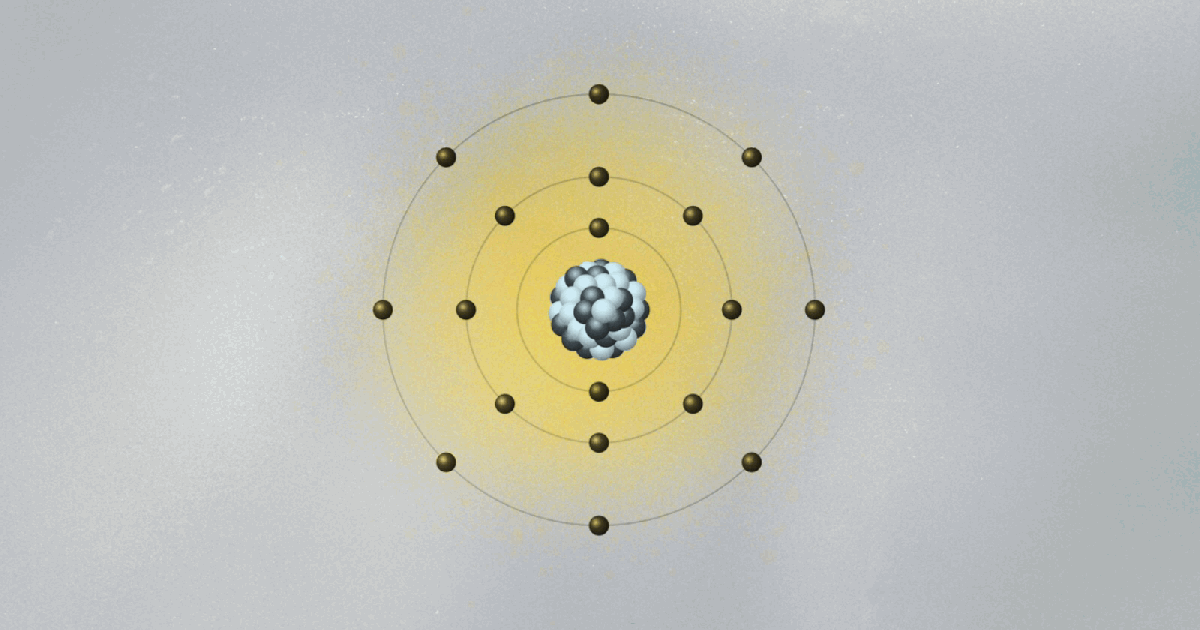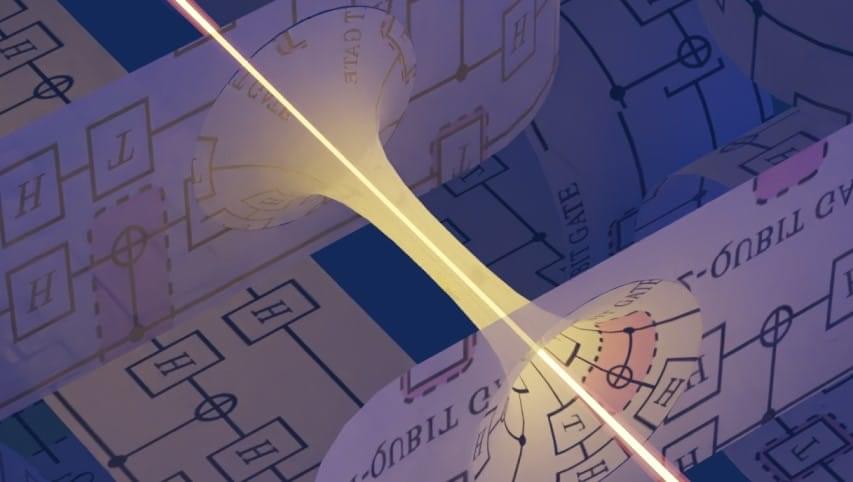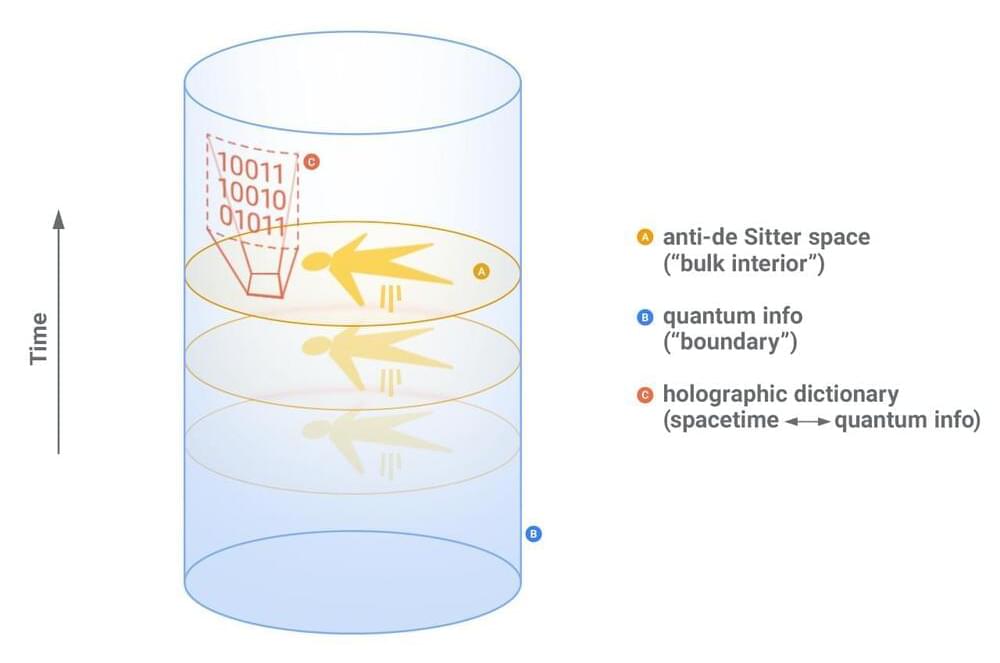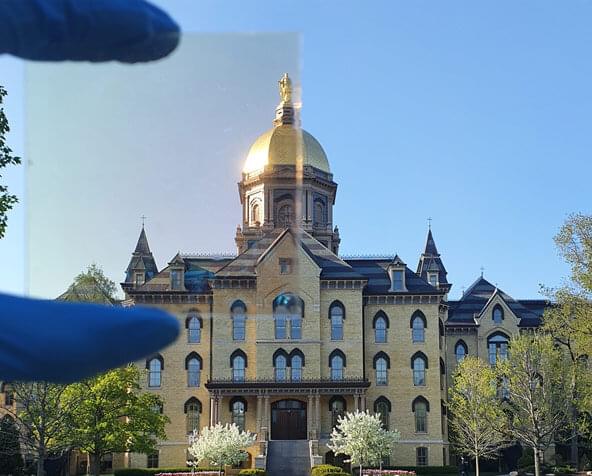From your smartphone to just a regular clock, quantum physics may be weird, but it’s also practical.



Bohr’s model of the atom is kind of crazy. His collage of ideas mixing old and new concepts was the fruit of Bohr’s amazing intuition. Looking only at hydrogen, the simplest of all atoms, Bohr formed the image of a miniature solar system, with a proton in the center and the electron circling around it.
Following the physicist’s way of doing things, he wanted to explain some of his observed data with the simplest possible model. But there was a problem. The electron, being negatively charged, is attracted to the proton, which is positive. According to classical electromagnetism, the theory that describes how charged particles attract and repel one another, an electron would spiral down to the nucleus. As it circled the proton, it would radiate away its energy and fall in. No orbit would be stable, and atoms could not exist. Clearly, something new and revolutionary was needed. The solar system could only go so far as an analogy.
To salvage the atom, Bohr had to invent new rules that clashed with classical physics. He bravely suggested the implausible: What if the electron could only circle the nucleus in certain orbits, separated from each other in space like the steps of a ladder or the layers of an onion? Just like you can’t stand between steps, the electron can’t stay anywhere between two orbits. It can only jump from one orbit to another, the same way we can jump between steps. Bohr had just described quantum jumps.

Physicists at Google Quantum AI have used their quantum computer to study a type of effective particle that is more resilient to environmental disturbances that can degrade quantum calculations. These effective particles, known as Majorana edge modes, form as a result of a collective excitation of multiple individual particles, like ocean waves form from the collective motions of water molecules. Majorana edge modes are of particular interest in quantum computing applications because they exhibit special symmetries that can protect the otherwise fragile quantum states from noise in the environment.
The condensed matter physicist Philip Anderson once wrote, “It is only slightly overstating the case to say that physics is the study of symmetry.” Indeed, studying physical phenomena and their relationship to underlying symmetries has been the main thrust of physics for centuries. Symmetries are simply statements about what transformations a system can undergo—such as a translation, rotation, or inversion through a mirror—and remain unchanged. They can simplify problems and elucidate underlying physical laws. And, as shown in the new research, symmetries can even prevent the seemingly inexorable quantum process of decoherence.
When running a calculation on a quantum computer, we typically want the quantum bits, or “qubits,” in the computer to be in a single, pure quantum state. But decoherence occurs when external electric fields or other environmental noise disturb these states by jumbling them up with other states to create undesirable states. If a state has a certain symmetry, then it could be possible to isolate it, effectively creating an island of stability that is impossible to mix with the other states that don’t also have the special symmetry. In this way, since the noise can no longer connect the symmetric state to the others, it could preserve the coherence of the state.

Scientists have, for the first time, developed a quantum experiment that allows them to study the dynamics, or behavior, of a special kind of theoretical wormhole. The experiment has not created an actual wormhole (a rupture in space and time), rather it allows researchers to probe connections between theoretical wormholes and quantum physics, a prediction of so-called quantum gravity. Quantum gravity refers to a set of theories that seek to connect gravity with quantum physics, two fundamental and well-studied descriptions of nature that appear inherently incompatible with each other.
“We found a quantum system that exhibits key properties of a gravitational wormhole yet is sufficiently small to implement on today’s quantum hardware,” says Maria Spiropulu, the principal investigator of the U.S. Department of Energy Office of Science research program Quantum Communication Channels for Fundamental Physics (QCCFP) and the Shang-Yi Ch’en Professor of Physics at Caltech. “This work constitutes a step toward a larger program of testing quantum gravity physics using a quantum computer. It does not substitute for direct probes of quantum gravity in the same way as other planned experiments that might probe quantum gravity effects in the future using quantum sensing, but it does offer a powerful testbed to exercise ideas of quantum gravity.”
The research will be published December 1 in the journal Nature. The study’s first authors are Daniel Jafferis of Harvard University and Alexander Zlokapa (BS ‘21), a former undergraduate student at Caltech who started on this project for his bachelor’s thesis with Spiropulu and has since moved on to graduate school at MIT.


Wormholes — wrinkles in the fabric of spacetime that connect two disparate locations — may seem like the stuff of science fiction. But whether or not they exist in reality, studying these hypothetical objects could be the key to making concrete the tantalizing link between information and matter that has bedeviled physicists for decades.
Surprisingly, a quantum computer is an ideal platform to investigate this connection. The trick is to use a correspondence called AdS/CFT, which establishes an equivalence between a theory that describes gravity and spacetime (and wormholes) in a fictional world with a special geometry (AdS) to a quantum theory that does not contain gravity at all (CFT).
In “Traversable wormhole dynamics on a quantum processor”, published in Nature today, we report on a collaboration with researchers at Caltech, Harvard, MIT, and Fermilab to simulate the CFT on the Google Sycamore processor. By studying this quantum theory on the processor, we are able to leverage the AdS/CFT correspondence to probe the dynamics of a quantum system equivalent to a wormhole in a model of gravity. The Google Sycamore processor is among the first to have the fidelity needed to carry out this experiment.

Cooling accounts for about 15 percent of global energy consumption. Conventional clear windows allow the sun to heat up interior spaces, which energy-guzzling air-conditioners must then cool down. But what if a window could help cool the room, use no energy and preserve the view?
Tengfei Luo, the Dorini Family Professor of Energy Studies at the University of Notre Dame, and postdoctoral associate Seongmin Kim have devised a transparent coating for windows that does just that.
The coating, or transparent radiative cooler (TRC), allows visible light to come in and keeps other heat-producing light out. The researchers estimate that this invention can reduce electric cooling costs by one-third in hot climates compared to conventional glass windows.


Using modified MRI machines, physicists may have found quantum entanglement between the heart and brain If someone were to (theoretically) throw a wrench at your head, you might be able to catch it just in time to avoid a concussion. But how? Typically, for split-second reactions, we do not consciously decide to catch.

This could help us probe into the lesser-known field of quantum gravity.
A collaborative team of researchers in the U.S. created a holographic wormhole and sent a message through it. This is the first known report of a quantum simulation of a holographic wormhole on a quantum processor.
However, the two theories are fundamentally incompatible and the holographic principle is a guide that can help us combine the two.
Metamorworks/iStock.
Einstein’s theory of general relativity helps us to understand the physical world such as astronomical objects with high energies or matter densities. Quantum mechanics on the other hand, describes matter at atomic and subatomic scales.